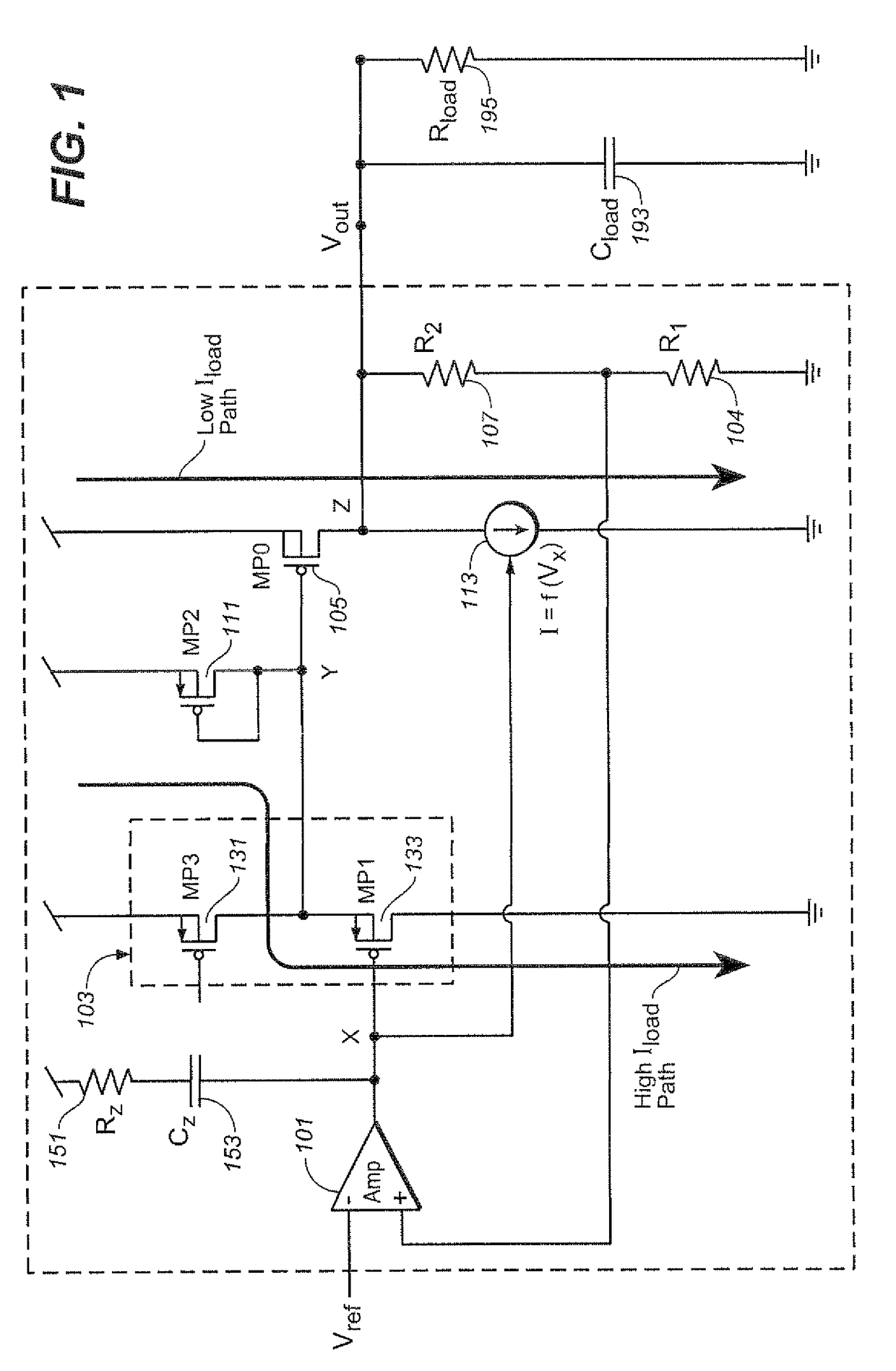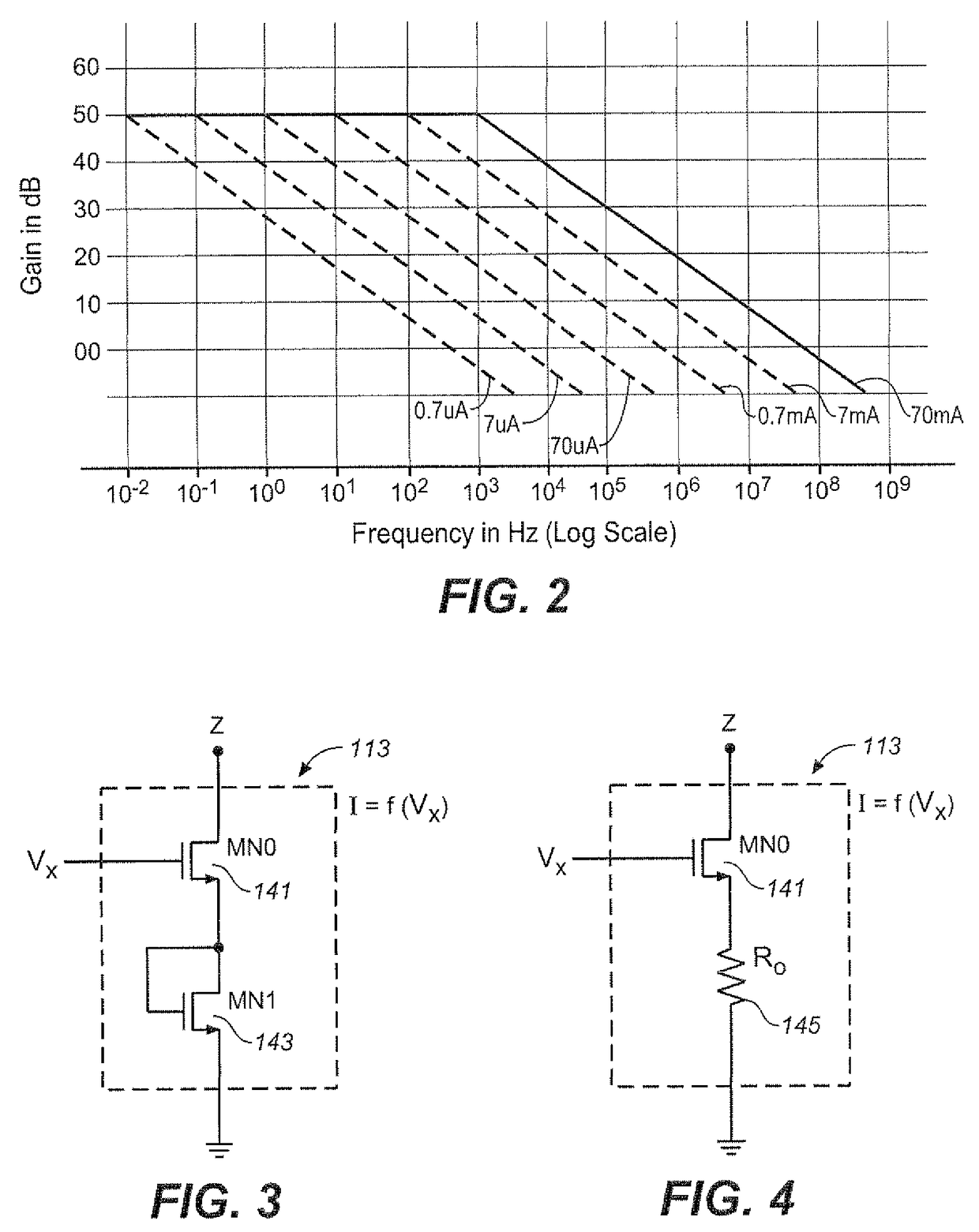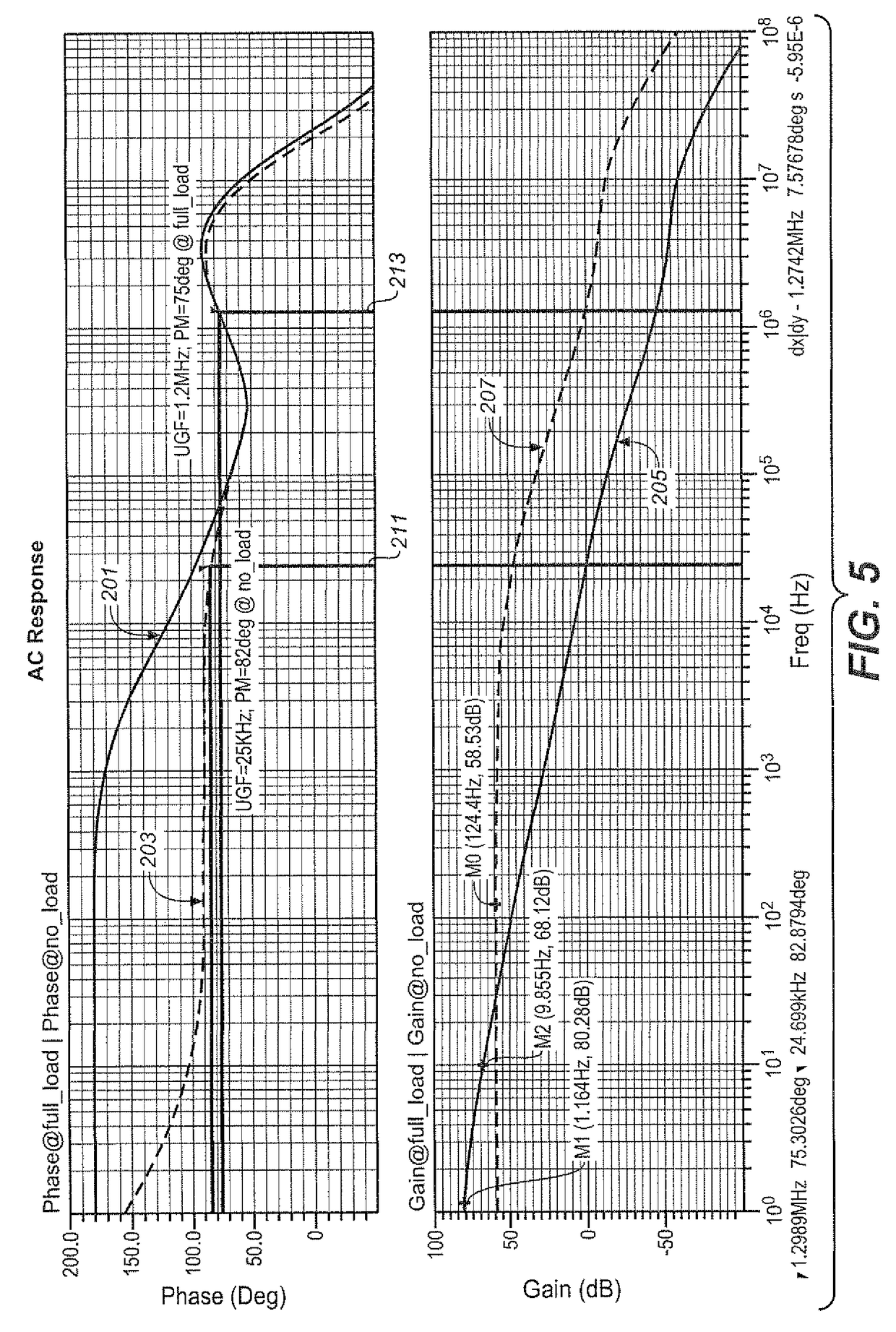Controlled load regulation and improved response time of LDO with adaptive current distribution mechanism
a load regulation and adaptive current technology, applied in the direction of electric variable regulation, process and machine control, instruments, etc., can solve the problems of increasing the cost of capacitors, and requiring a large amount of board spa
- Summary
- Abstract
- Description
- Claims
- Application Information
AI Technical Summary
Problems solved by technology
Method used
Image
Examples
Embodiment Construction
[0011]The techniques presented in the following provide a low drop-out (LDO) voltage regulation circuit that improves upon many of the limitations described above in the Background section. In particular, the load regulation in the exemplary embodiment of an LDO will improve as the DC gain will not go down at lower load currents. Further, the no load to full load response time is improved as the load pole and power MOS gate pole are actively controlled with respect to output load current. In this mechanism, as the amount of current being supplied to the load decreases, the internal current flow shifts from a first internal current path to a second internal current path and vice versa. This arrangement maintains the desired pole structure and keeps the quiescent current largely the same for all load current levels.
[0012]More specifically, FIG. 1 is an exemplary embodiment to illustrate some aspects. Relative to a typical implementation of an LDO regulator, the mechanism presented her...
PUM
 Login to View More
Login to View More Abstract
Description
Claims
Application Information
 Login to View More
Login to View More - R&D
- Intellectual Property
- Life Sciences
- Materials
- Tech Scout
- Unparalleled Data Quality
- Higher Quality Content
- 60% Fewer Hallucinations
Browse by: Latest US Patents, China's latest patents, Technical Efficacy Thesaurus, Application Domain, Technology Topic, Popular Technical Reports.
© 2025 PatSnap. All rights reserved.Legal|Privacy policy|Modern Slavery Act Transparency Statement|Sitemap|About US| Contact US: help@patsnap.com



